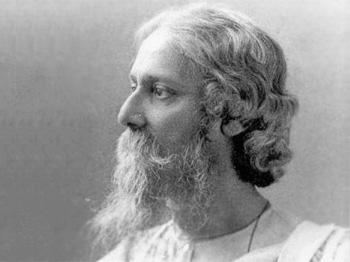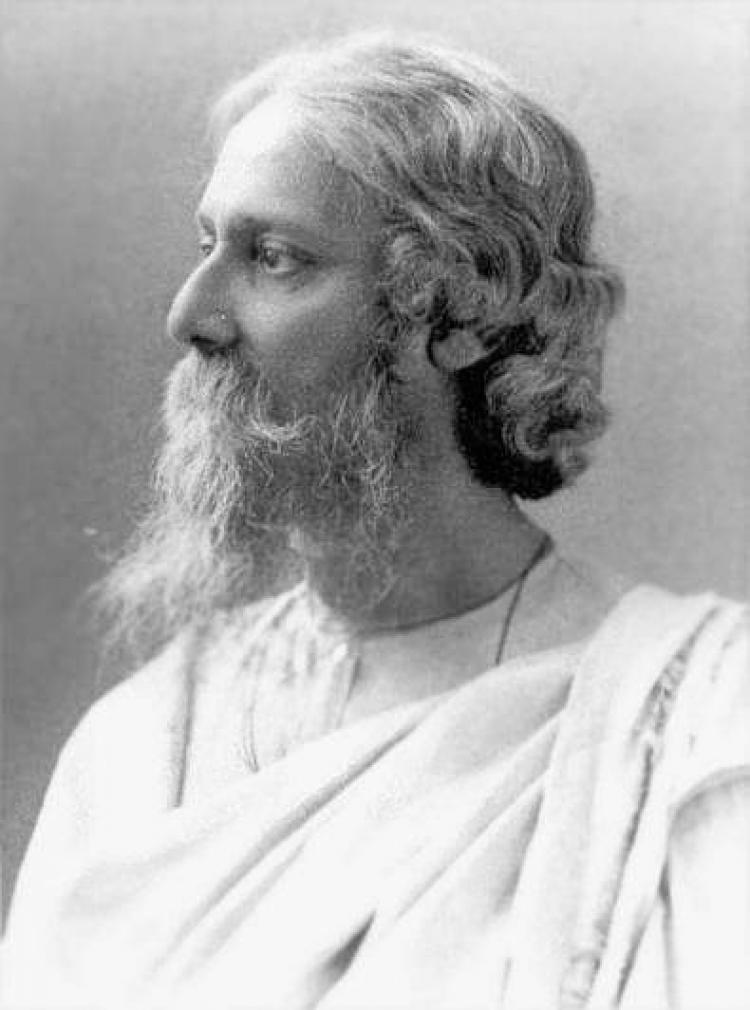Born to a leader of a revolutionary Hindu sect Brahmo Samaj in the western region Bengal in British-ruled India in 1867, Tagore was educated at home until the age of 17. Then he was sent to England for higher studies, but midway in the studies he returned home.
Apparently the formal format of education did not sit well with him. Years later in 1901, he established an open-air school at Shantiniketan which was developed into an international university named Vishwa Bharati after India’s independence. This school, which he envisioned as an Indian alternative to the colonial education, became his center of activity for the next 40 years until his death in 1941.
Tagore’s multi-faceted talent found its way in songs, poems, plays, short stories, novels, essays, letters, as well as paintings and drawings. His works reflect a deep bond between humans and nature. More often than not, he appealed for universal peace, love and harmony.
Until his middle years, his influence was mostly confined to the Indian subcontinent, especially to his native region Bengal, as his works were only in his native language, Bengali—India was and still is a multilingual country in which different languages are spoken in different regions.
However, his own translation of his spiritual lyrics from his poetic tome, titled Gitanjali, into English in 1912 opened the floodgates of his luminous poetic talent to the western world. The awe-struck West conferred the highest honor for literature, a Nobel Prize, on Gitanjali in 1913.
Gitanjali is an anthology of songs offered to the Infinite. The poet’s meditation and contemplation on God, man, and nature flowed into more than 100 poems in the book.
Following his Nobel Prize-winning book, Tagore translated several of his other works into English, which helped his fame to touch a new height globally. He traveled across continents on lecture tours and friendship tours and became the spiritual and cultural heritage of India.
The British government honored the philosopher poet with the Knighthood in 1915. However, deeply saddened by the infamous Jallianwala Bagh massacre in 1919, in which British soldiers shot dead scores of unarmed people in the northern Indian city of Amritsar, he returned the honor.
Tagore was a close friend to Mahatma Gandhi, who was leading the famous nationalist movement against the British rule in the country. Though seen taking part in several nationalist activities, he had dreamt of a borderless world in which discrimination based on people’s nationality and race would not exist.
Though his heart grieved at the violence afflicting humanity, he always believed in the divinity hidden in the human heart. This belief was evident in his writing when he was just 18. “A sudden spring breeze of religious experience for the first time came to my life and passed away leaving in my memory a direct message of spiritual reality,” he wrote in “The Lord of Life.”
Tagore was also impressed by the eternal values of Buddha’s teachings. For instance, aggrieved by the greed, hatred and violence seen everywhere in the world, he pleads with the Buddha for a healing touch in a poem as below:
Let love’s lotus with its inexhaustible treasure of honey
Open its petals in thy light,
O Serene, O Free, in thine immeasurable mercy and goodness
Wipe away all dark stains from the heart of this earth.
Tagore envisioned a humanity free from man-made divisions with one religion for all, which is ‘The Religion of Man.’ Though inspired by the Advaita Vedanta, a school of Hindiusm that propagates oneness (the union of individual self with the Universal Self) as reality, Tagore refused to heed to any institutional creed or dogma. “Think clearly, feel nobly, and act rightly to become channels of truth”—this was his ideal.







